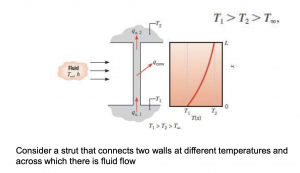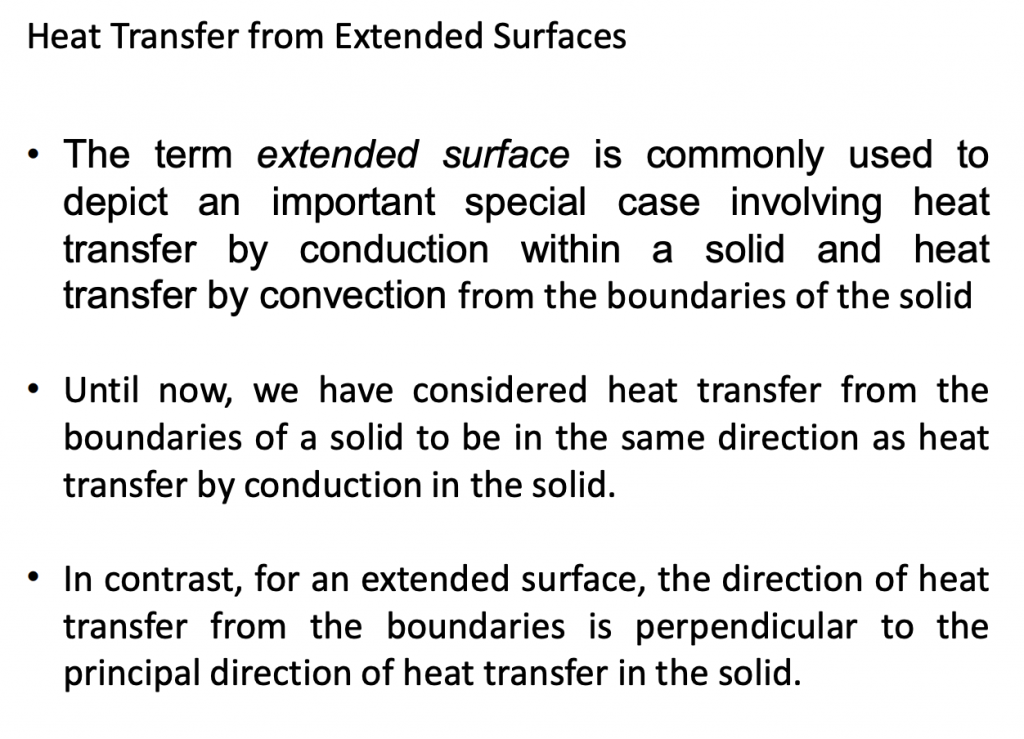Enhancing Heat Transfer with Fins – Mechanical Engineering Notes
Summary:
This text discusses the concept of extended surfaces, specifically fins, and their role in enhancing heat transfer. Fins are used to increase the effective surface area for heat transfer and improve the overall heat dissipation from a solid to an adjoining fluid. The direction of heat transfer from the boundaries of a fin is perpendicular to the principal direction of heat transfer within the solid. The heat transfer rate can be increased by employing fins without solely relying on increasing the convection coefficient or reducing the fluid temperature. The effectiveness of fins can be evaluated using fin effectiveness and fin efficiency, which consider factors such as the choice of material, fin geometry, and heat transfer coefficient. Various fin configurations and their applications in radiators, engines, motors, and electronic devices are also mentioned. The text provides mathematical equations and solutions for heat transfer through rectangular fins and the temperature distribution along the fin. Additionally, it discusses the heat flow with and without fins and introduces the concept of fin efficiency.
Excerpt:
Enhancing Heat Transfer with Fins
Heat Transfer from Extended Surfaces
• The term extended surface is commonly used to depict an important special case involving heat transfer by conduction within a solid and heat transfer by convection from the boundaries of the solid
• Until now, we have considered heat transfer from the boundaries of a solid to be in the same direction as heat transfer by conduction in the solid.
• In contrast, for an extended surface, the direction of heat transfer from the boundaries is perpendicular to the principal direction of heat transfer in the solid.

Enhancing Hear Transfer with Fins
• There is concurrent heat transfer by convection to the fluid, causing qx. Hence the magnitude of the temperature gradient dT/dx decreases with increasing x.
• Although many situations involve such combined conduction–convection effects, the most frequent application is one in which an extended surface is used specifically to enhance heat transfer between a solid and an adjoining fluid.


Reviews